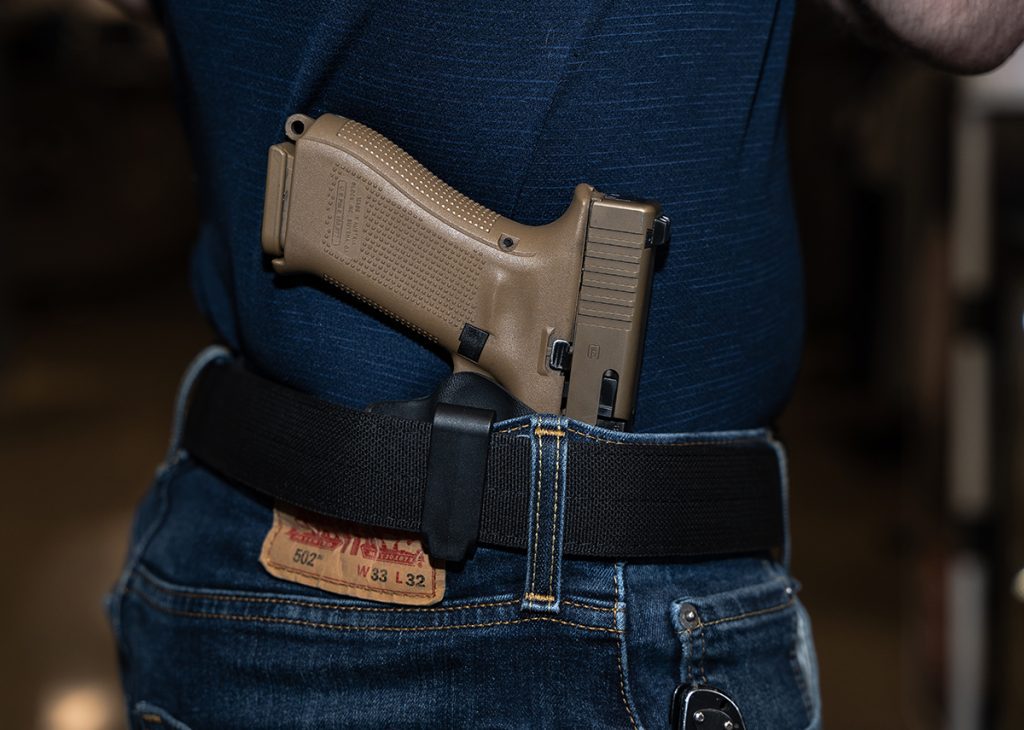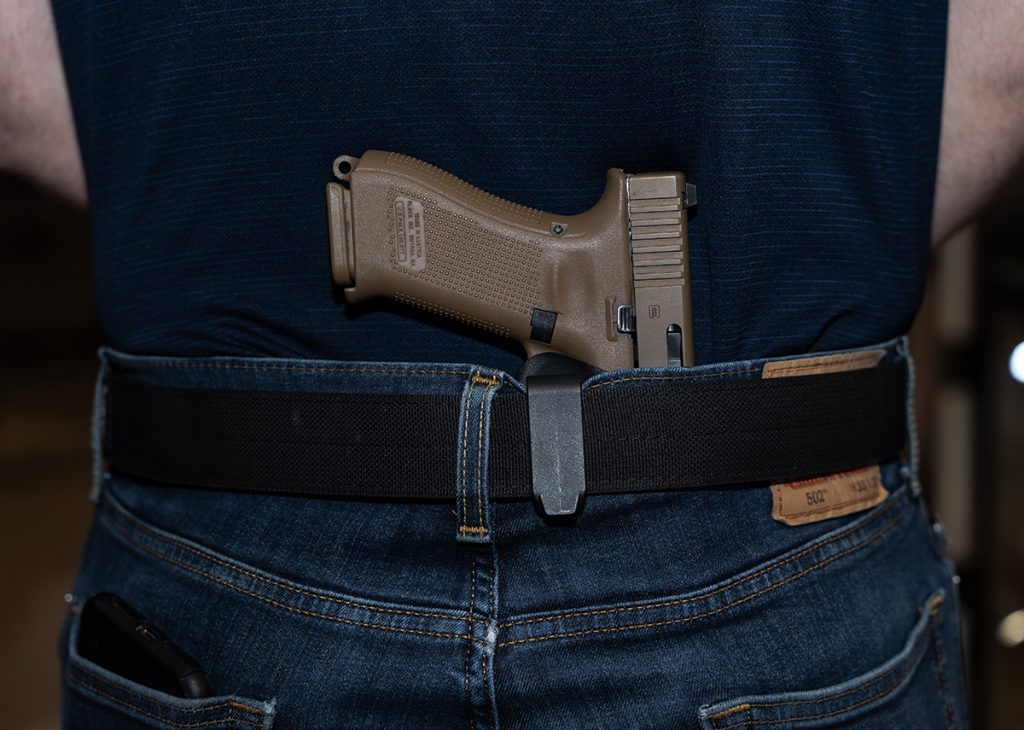There are many ways to carry a firearm. It’s helpful to invest in a couple of different holster options to fit the changing needs of the user from day to day – especially for women who may be wearing a pair of pants one day and a skirt or dress the next day. There has been a substantial rise of women in the firearm/self-defense realm, which has led to more versatile carry positions and options. Purse carry is no longer the primary or even most convenient carry option for ladies.
As expected, there are pros and cons to any concealed carry method. Concealed carry experts agree the safest and most convenient way to carry a concealed firearm is on your body.
The Top 3 Ways to Carry Concealed
- Appendix carry
- 4 o’clock / Strong side carry
- Small of the back carry
Appendix Concealed Carry
Over the last few years, appendix carry has grown to become one of the most popular carry options. With appendix carry, the gun sits in the waistband in the front of the body, usually a little offset from the belt buckle toward your dominant side (this may vary from person to person). There was a time when people refused to carry like this because they believed it was extremely dangerous. The idea was if a negligent discharge occurred, there was a chance of hitting the femoral artery, or for men, some important private parts. While that sounds scary, appendix carry is not any more dangerous than any other method of carrying if the rules of firearm safety are followed and a proper holster is used.
Pros:
- The gun is in the most convenient and accessible place
- It’s easy to keep track of your firearm and defend it
- Easy to conceal
Cons:
- Can be uncomfortable (especially if carrying a larger-framed firearm)
4 o’clock or Strong Side Concealed Carry
4 o’clock is one of the oldest and most popular ways to carry. With this concealed carry method, your firearm sits on your hip, on your dominant side. The firearm can either be inside the waistband (IWB) or outside the waistband (OWB). Keep in mind, even if the pocket holster is inside the waistband, it is still much more difficult to conceal this way. If you choose outside the waistband, it’s impossible, unless you are wearing a sweatshirt or jacket. People prefer this method over appendix because it can be more comfortable, especially when sitting down or bending over to pick something up.
Pros:
- The gun is still in a convenient and accessible place
- If inside the waistband, it’s reasonably easy to conceal
- Slightly more comfortable than appendix carry
Cons:
- Can be harder to defend than appendix carry
- Not easy to conceal if it’s outside the waistband
Small of the back Concealed Carry
Small of the back carry is exactly how it sounds. The firearm is typically inside your waistband in the small of your back. There are many things wrong with this concealed carry method and the cons outweigh the pros. It’s difficult to reach your firearm and the draw is inconsistent. Holstering the firearm can be dangerous due to difficulty finding the opening of the holster – that leaves a lot of room to potentially muzzle yourself. Overall, awareness of your firearm is low. It’s hard to know if your firearm is printing and if someone else could easily access it.
Pros:
- Fairly comfortable unless in a seated position
Cons:
- More difficult to access
- Holstering safely can be an issue
- Difficult to defend your gun from this position / easy for someone else to access your firearm
- Inconsistent / slow draw
Different Ways to Carry Concealed
Ankle Carry
This method is better reserved as a backup carry option as opposed to a primary carry option. An ankle holster can be slow and difficult to access.
Belly Band
These are a great choice for people who don’t wear pants with belt loops, or maybe for people who want to carry while they workout.
Thigh Holster
This is fantastic for women because it still allows for on-body carry while wearing a dress or a skirt.
Bra Holster
This is another option for women who would prefer to wear something other than pants and belts, and these can even be used with cropped tops.
Pocket Carry
If you choose to carry in your pocket, it’s important to still invest in some type of holster to keep your trigger protected.
Off-Body Carry
This is another choice to consider if you absolutely cannot carry on your body for whatever reason. It’s important to understand if you choose to carry in a purse, backpack, or any other bag, you must always maintain positive control of that bag. A firearm should never be left floating loose in any bag, there should still be some type of holster on the inside of the bag for safety and efficiency. There should also be a designated pocket reserved for your firearm and nothing else.
Concealed Carry & Handgun Training
No matter how you choose to carry, the most important thing is training. Learn how to access your firearm consistently and efficiently from whatever position you carry in. If you carry multiple ways, understand you will have to invest more time in your training. 88 Tactical offers all levels of handgun training, from Intro to Handgun through advanced-level classes. Explore our handgun class options, including Concealed Carry.
Concealed Carry Holster Selection
Not sure which holster or attachments to choose for your carry option? Check out our 8 Factors to Consider when Choosing a Concealed Carry Holster blog post. There are many different types of holsters and methods of carrying concealed. The number of options and considerations can be overwhelming if you don’t know where to start. Each holster has its own strengths and limitations. Your body type, daily activities, and clothing choices will dictate what will work best and which holster to choose.






